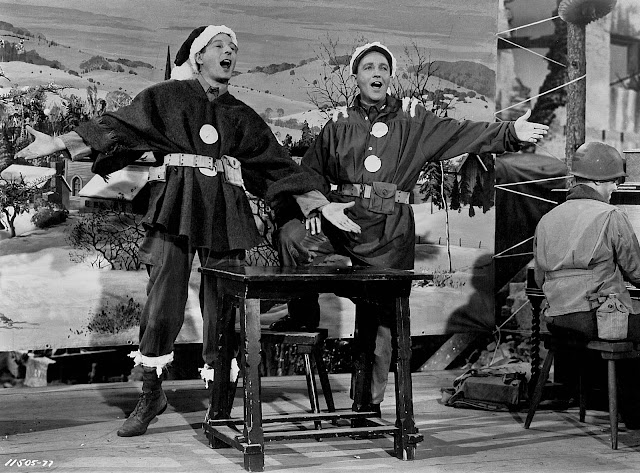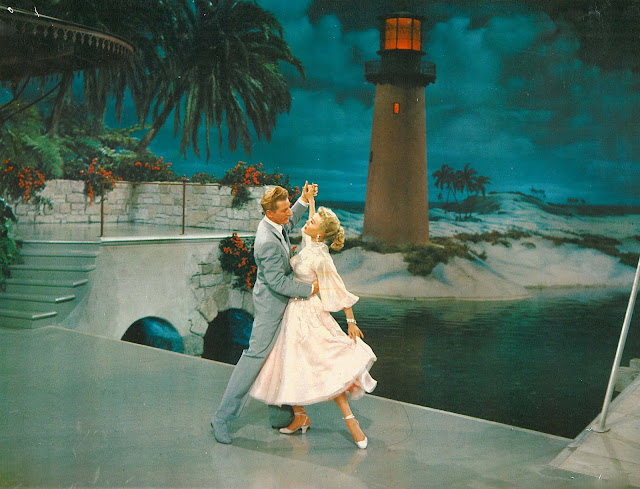
It Happened One Night Spooks Me!
Guess I'm safe for assuming that no one else refers to It Happened One Night as the Dawn Of The Dead of romantic comedies, and yet for me, it's every bit as unsettling as that zombie-fest of 1979. I might not even have watched but for Netflix streaming IHON in HD this month, thus chance to look again at latest tweaks Sony/Columbia applied to long-problematic surviving elements. The feel-good Frank Capra classic never left me feeling so, for here's Depression (that D in caps throughout) spread like black tar down roads Clark Gable and Claudette Colbert travel. Post-apocalyptic movies are all the rage now --- who knew they did one in 1934? This is our lives was maybe what patrons thought then, and could be that's what put them in seats by droves. Would It Happened One Night disquiet me less were I not so spoiled? Depressionists didn't just expect food, shelter, and overcoats the way we do now. Life was struggle and there's no assurance Claudette will finish this bus ride intact, hers a perilous trip to Oz with Gable as sole protector. Everyone else traffics at thievery, extortion, and fortune hunting. Even a kid in tears over his mother's starvation comes across as maybe running a scam. You can go cynical quick on human nature watching It Happened One Night.

Jolly Alan Hale gives the couple a lift, then steals off with their luggage, a second time that happens to Claudette's character. Gable takes after the guy, subdues him (offscreen), then reports back later of having tied the would-be rogue to a tree, to which I wonder what'll happen to immobilized Hale when the next band of road agents come along. At one point, Colbert unknowingly breaks line at a communal shower, incurring wrath of surly-at-the-least women I half expected to gang-whoop her. Transit life for all I know is more dangerous now than then, but what engaged me here was Capra's refusal to sugarcoat hardship of living minus a safety net. Busted Gable makes do with raw carrots off the ground and you figure it's not his first time. I wonder how many in 1934 who saw and loved It Happened One Night had known hunger in their own lives and were only recently endowed with means to buy a movie ticket. Something made it click to fantastic rentals, and I'd doubt that was mere Gable and Colbert Together For The First Time (as promoted in the fan magazine ad above).



Don't know where, but I read David Selznick considered It Happened One Night the perfect blend for boxoffice, one he wished could have borne his name. Histories positioned IHON as little engine that could, up from poverty row and defeating odds to become sleeper of all time. Some of that I'd guess is true. Frank Capra would cast the film as underdog not unlike characters he developed for stories to come. You almost wonder why he didn't make a movie about the making of It Happened One Night, so entrenched were legends within short time after perfect storm of its 1934 reception. Remember the part where ...? led off conversation that inspired second, third, whatever viewings. Theatres did better with It Happened One Night on repeat runs than most product on a first, it being among few comedies to engage a truly mass following. Was Capra's just perfect timing? Variety wondered why 1948's reissue booking delivered short for a Los Angeles circuit. Well ... life, roads, and romance saw change (a lot) in those fourteen years between, and maybe folks didn't want reminding of how austere things had all too recently been.



Documentaries about Hollywood weren't complete without excerpts of It Happened One Night. Those walls of Jericho bespoke movies as they'd been and wouldn't be again. Gable and Colbert hitch-hiking encapsulates what Classic Era stars and story-tellers did best ... proof that an industry wasn't making movies like it used to. Such ease of perfection loomed over Frank Capra as well --- why couldn't he do them so well anymore? It Happened One Night, with ducks in a row five minutes past titles, was economical like this director's silent comedies had been. Gable and Colbert vehicles to come were evidence that such quality was had once in a hundred. Part of the freshness came of their acts being not so ossified in 1934. Both major names, neither Gable nor Colbert were yet crated with fixed image that would make later work more predictable. Watch their reunion in 1940's Boom Town and note mannerism, tricks, and gesturing clearly sops to fan expectation. Is it a wonder stars got bored being stars? For It Happened One Night at least, there was fun of personas still developing. Gable doffing clothes to reveal no undershirt was image-defining he (and Metro) would trade on long after this kind of spontaneity got corporate-scrubbed off his plate.


I'd give Frank Capra credit for inventing romantic comedies as we've known them for a past seventy-six years. Was there anything prior to 1934 you'd call a precursor? Not among pics I've seen. Prior (talking) battle-of-gender comedies play more raffish and precode. It Happened One Night got under wire of strict enforcement too, but doesn't really speak in pre-coded terms (could there have been trims made to the negative for subsequent releases?). I wonder if writers of Kate Hudson and Jennifer Aniston rom-coms have watched It Happened One Night. Certainly they know the blueprint, having doubtless looked at numerous other shows that imitated Capra's original. Is it safe to say that all romance comedies are six (more or less) degrees removed from It Happened One Night? My own uneasy response notwithstanding, I'd think civilians would enjoy IHON as much as any 30's sampling, possibly more for having seen its devices reused right up to present day. Frank Capra would travel with It Happened One Night till nearly an end. One early eighties revival he attended at the long-shuttered Capri Theatre in Charlotte found management presenting a 35mm print that looked like a third-generation dupe, for which Capra apologized profusely. This was not the movie I made, said the director to an audience stilled by disappointment.









































